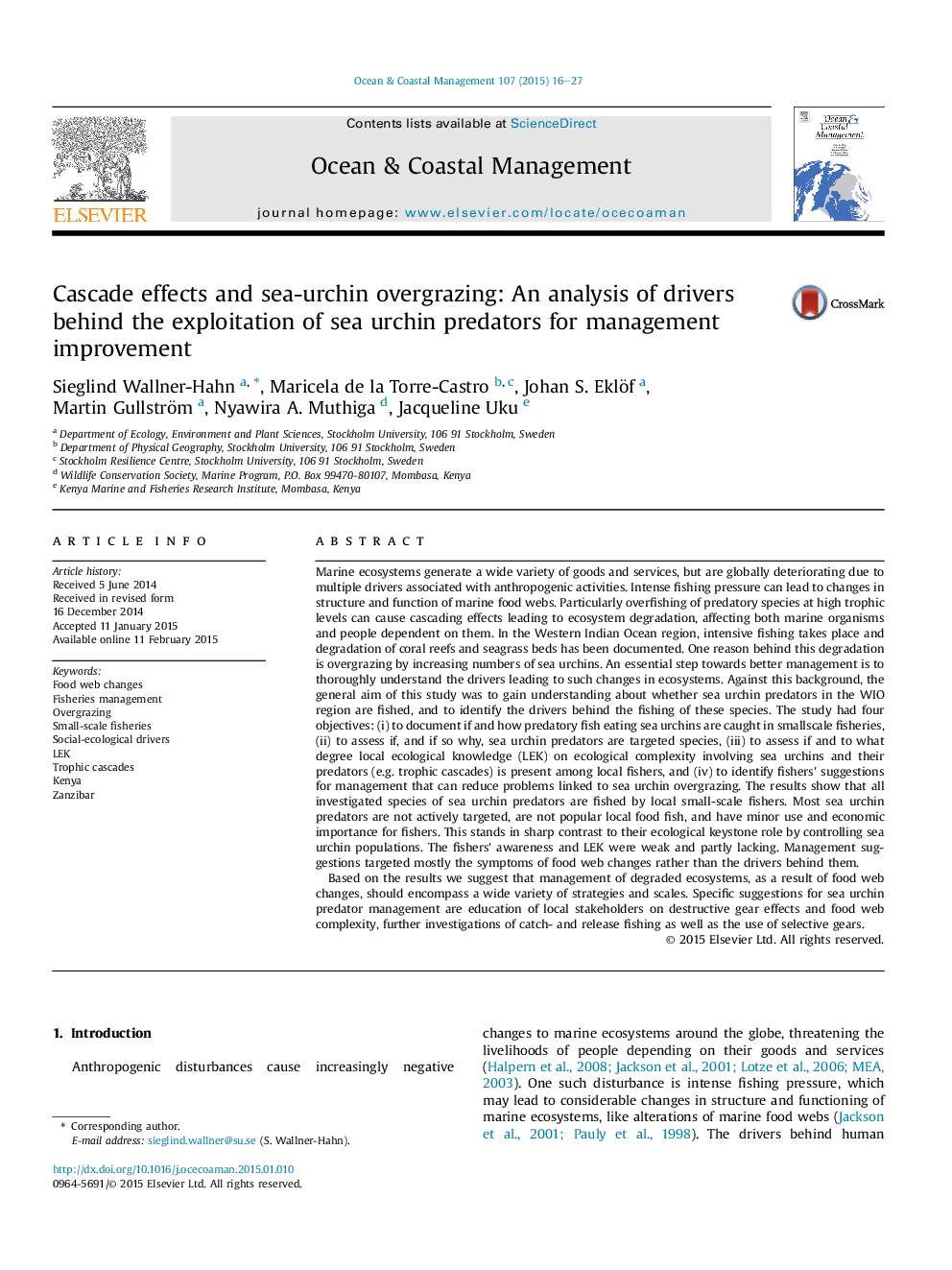| کد مقاله | کد نشریه | سال انتشار | مقاله انگلیسی | نسخه تمام متن |
|---|---|---|---|---|
| 1723480 | 1520521 | 2015 | 12 صفحه PDF | دانلود رایگان |
• All identified sea urchin predator fish species are fished by local small-scale fishers.
• Most sea urchin predators are unpopular food fish, and have minor economic importance for fishers.
• There is a discrepancy between their ecological importance and their minor importance for local people.
• The fishers' awareness and local ecological knowledge were weak and partly lacking.
• Their management suggestions target mostly symptoms of food web changes rather than drivers.
Marine ecosystems generate a wide variety of goods and services, but are globally deteriorating due to multiple drivers associated with anthropogenic activities. Intense fishing pressure can lead to changes in structure and function of marine food webs. Particularly overfishing of predatory species at high trophic levels can cause cascading effects leading to ecosystem degradation, affecting both marine organisms and people dependent on them. In the Western Indian Ocean region, intensive fishing takes place and degradation of coral reefs and seagrass beds has been documented. One reason behind this degradation is overgrazing by increasing numbers of sea urchins. An essential step towards better management is to thoroughly understand the drivers leading to such changes in ecosystems. Against this background, the general aim of this study was to gain understanding about whether sea urchin predators in the WIO region are fished, and to identify the drivers behind the fishing of these species. The study had four objectives: (i) to document if and how predatory fish eating sea urchins are caught in smallscale fisheries, (ii) to assess if, and if so why, sea urchin predators are targeted species, (iii) to assess if and to what degree local ecological knowledge (LEK) on ecological complexity involving sea urchins and their predators (e.g. trophic cascades) is present among local fishers, and (iv) to identify fishers' suggestions for management that can reduce problems linked to sea urchin overgrazing. The results show that all investigated species of sea urchin predators are fished by local small-scale fishers. Most sea urchin predators are not actively targeted, are not popular local food fish, and have minor use and economic importance for fishers. This stands in sharp contrast to their ecological keystone role by controlling sea urchin populations. The fishers' awareness and LEK were weak and partly lacking. Management suggestions targeted mostly the symptoms of food web changes rather than the drivers behind them.Based on the results we suggest that management of degraded ecosystems, as a result of food web changes, should encompass a wide variety of strategies and scales. Specific suggestions for sea urchin predator management are education of local stakeholders on destructive gear effects and food web complexity, further investigations of catch- and release fishing as well as the use of selective gears.
Journal: Ocean & Coastal Management - Volume 107, April 2015, Pages 16–27
